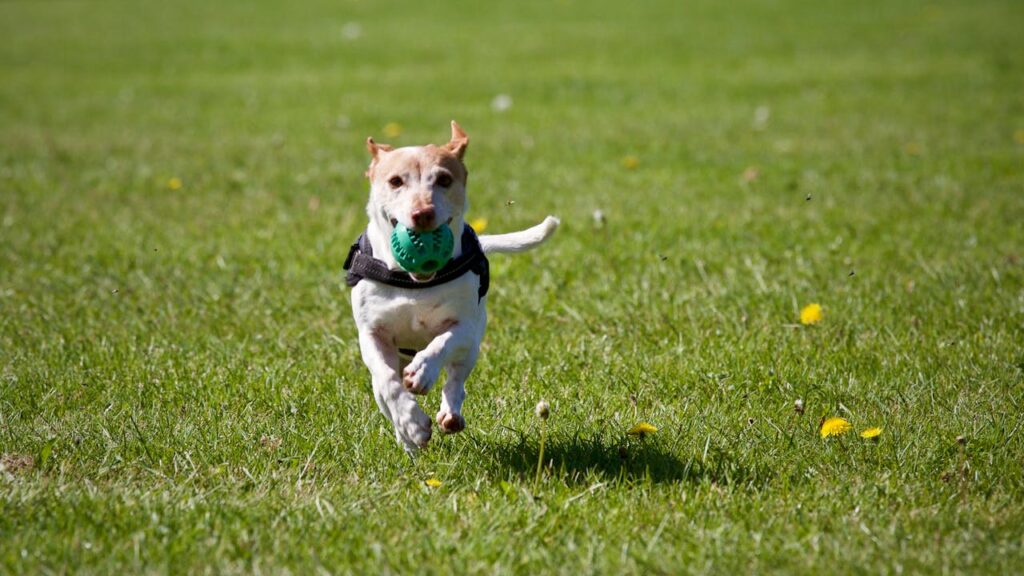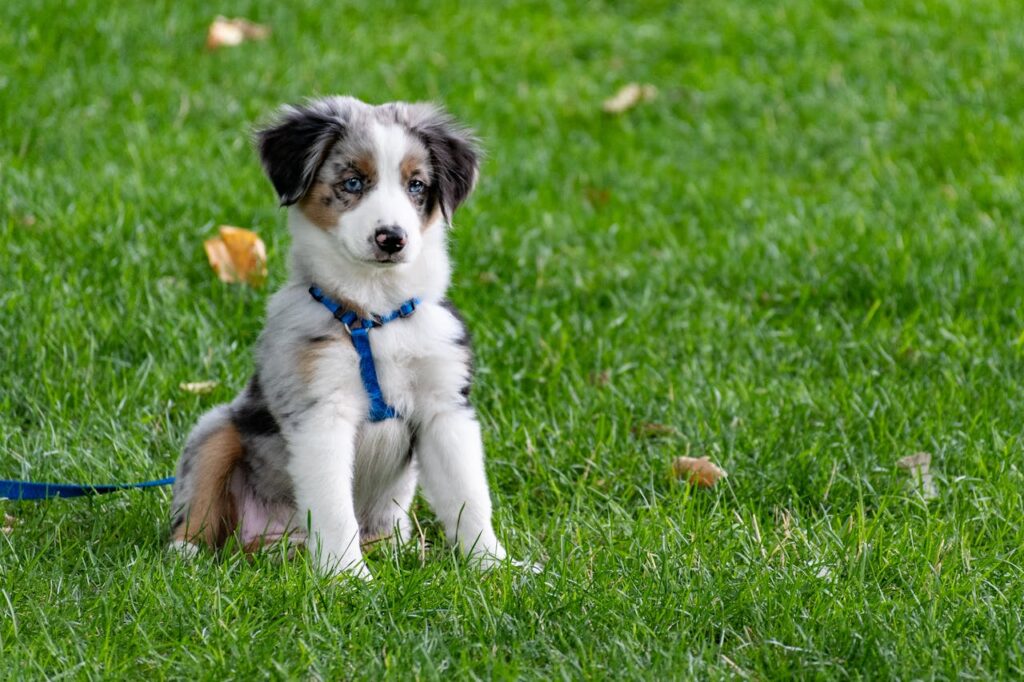If you’ve noticed brown patches on your lawn and suspect your dog’s pee is the culprit, you’re at the right place to get the solution.
Dog urine contains a high concentration of nitrogen, which can overload your grass and cause it to die.
While nitrogen is beneficial for grass in controlled amounts, the concentrated levels in dog pee act like a toxic fertilizer, creating unsightly dead patches.
The good news is that you don’t have to choose between having a lush lawn and a happy dog. There are plenty of practical ways to prevent this damage.
By combining several methods, you can stop the nitrogen overload, fix existing damage, and keep your grass healthy.
Here’s an in-depth guide on how to stop dog pee from killing grass with nine actionable steps.
Effective Strategies to Protect Your Lawn From Dog Urine
Water the Spot Immediately
The simplest way to prevent dog urine from damaging your grass is to dilute it with water. After your dog urinates, grab a hose or a watering can and soak the area thoroughly.
This will dilute the nitrogen and reduce its harmful effects on the grass.
While this solution is highly effective, it requires you to be present each time your dog pees. If your dog has free access to a yard, this method might be impractical unless you’re always nearby.
However, for walks or supervised outdoor time, it’s a quick and easy fix.

Keep Your Dog Hydrated
A well-hydrated dog produces urine that is less concentrated, which means it contains less nitrogen. To keep your dog hydrated:
- Make sure they always have access to fresh, clean water.
- Switch to wet dog food, which has higher moisture content than dry kibble.
- Add flavor enhancers to their water to encourage them to drink more.
If your dog consistently seems dehydrated, despite having access to water, consult your veterinarian.
Some medical conditions, such as kidney issues or urinary tract infections, can affect hydration levels.
Train Your Dog to Use a Specific Spot
Training your dog to pee in a designated area can protect the rest of your lawn from damage. Set up a space with mulch, gravel, or artificial turf, and encourage your dog to use it for bathroom breaks.
Use positive reinforcement to make this training process successful. Reward your dog with treats, praise, or playtime whenever they use the designated spot.
Over time, this habit will stick, reducing the impact on your lawn. While training requires patience, it’s a long-term solution that benefits both your yard and your dog.
Mow Your Grass Higher
Taller grass is better equipped to handle the effects of dog urine. It shades the soil, retains more moisture, and reduces the impact of nitrogen.
If you usually mow your lawn short, raising the height of your mower blade can make a noticeable difference.
Even an extra inch of grass height can help dilute the urine naturally and protect the grass from immediate damage.
While shorter grass may look neater, slightly taller grass is much more resilient.

Plant Urine-Resistant Grass
Not all grasses are created equal when it comes to handling dog urine. Some grass types, like ryegrass and fescue, are more resistant to nitrogen and recover more quickly from damage.
If your lawn has persistent dead spots, consider reseeding with these more durable varieties.
While these grasses aren’t immune to urine damage, they are better equipped to withstand it. Combining this step with other preventative measures, such as keeping your dog hydrated or watering spots immediately, can significantly improve your lawn’s health.
Use Dietary Supplements (With Care)
Some supplements claim to reduce the nitrogen levels in dog urine, making it less harmful to grass. These supplements usually work by altering the pH balance or composition of your dog’s urine.
Before trying any supplement, consult your veterinarian. Not all products are safe for every dog, especially those with underlying health issues.
Follow dosage instructions carefully, and monitor your dog for any side effects. Supplements are best used as part of a broader strategy and may not work for every dog.
Repair Existing Damage
Dead patches from dog urine won’t heal on their own, so you’ll need to repair them. Here’s how:
- Baking Soda Paste: Mix baking soda with water to create a paste. Apply it to the affected areas, leave it for a few hours, and then rinse it off. This neutralizes the nitrogen in the soil and helps grass recover.
- Commercial Lawn Repair Products: These treatments are designed specifically for pet urine damage. They repair the soil, encourage new grass growth, and eliminate odors.
By addressing these spots promptly, you can restore your lawn’s appearance while preventing further damage.
Avoid Nitrogen-Based Fertilizers
Using nitrogen-rich fertilizers on a lawn already exposed to dog urine will only make matters worse. Check the labels on your lawn care products, and opt for nitrogen-free or low-nitrogen alternatives.
If you’re unsure which product to use, consult a lawn care professional or choose a fertilizer designed for pet-friendly yards.
Avoid over-fertilizing, as this can stress your grass and make it more susceptible to damage.
Aerate Your Lawn Regularly
Aerating your lawn improves soil drainage and prevents the buildup of salts and nitrogen from dog urine.
This process involves creating small holes in the soil, which allows air, water, and nutrients to penetrate more effectively.
You don’t need to aerate your lawn every year. For most yards, every two to three years is sufficient.
However, if your soil has poor drainage or you notice frequent damage, consider aerating annually for better results.
Additional Tips for a Healthier Lawn
- Rotate Bathroom Spots: If your dog pees in the same place every time, encourage them to use different parts of the yard. This spreads out the nitrogen and prevents concentrated damage.
- Use Dog Rocks: These natural mineral rocks, placed in your dog’s water bowl, claim to reduce nitrogen levels in urine. While their effectiveness varies, some dog owners find them helpful.
- Regular Lawn Maintenance: Keep your lawn healthy by watering it consistently, removing weeds, and reseeding thin areas. A robust lawn is more likely to withstand occasional urine exposure.
Conclusion
Understanding how to stop dog pee from killing grass doesn’t have to be overwhelming. The main issue lies in the high nitrogen content of dog urine, but there are many ways to minimize its impact.
Start by diluting urine with water, keeping your dog hydrated, and training them to use a designated bathroom spot.
Combine these steps with long-term solutions like planting resistant grass, repairing damage, and aerating your lawn.
With patience and consistent effort, you can maintain a vibrant, green lawn while keeping your dog happy.
It’s all about finding the right balance and implementing strategies that work best for your yard and your dog.
Related Posts:

